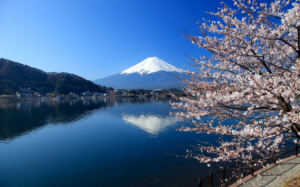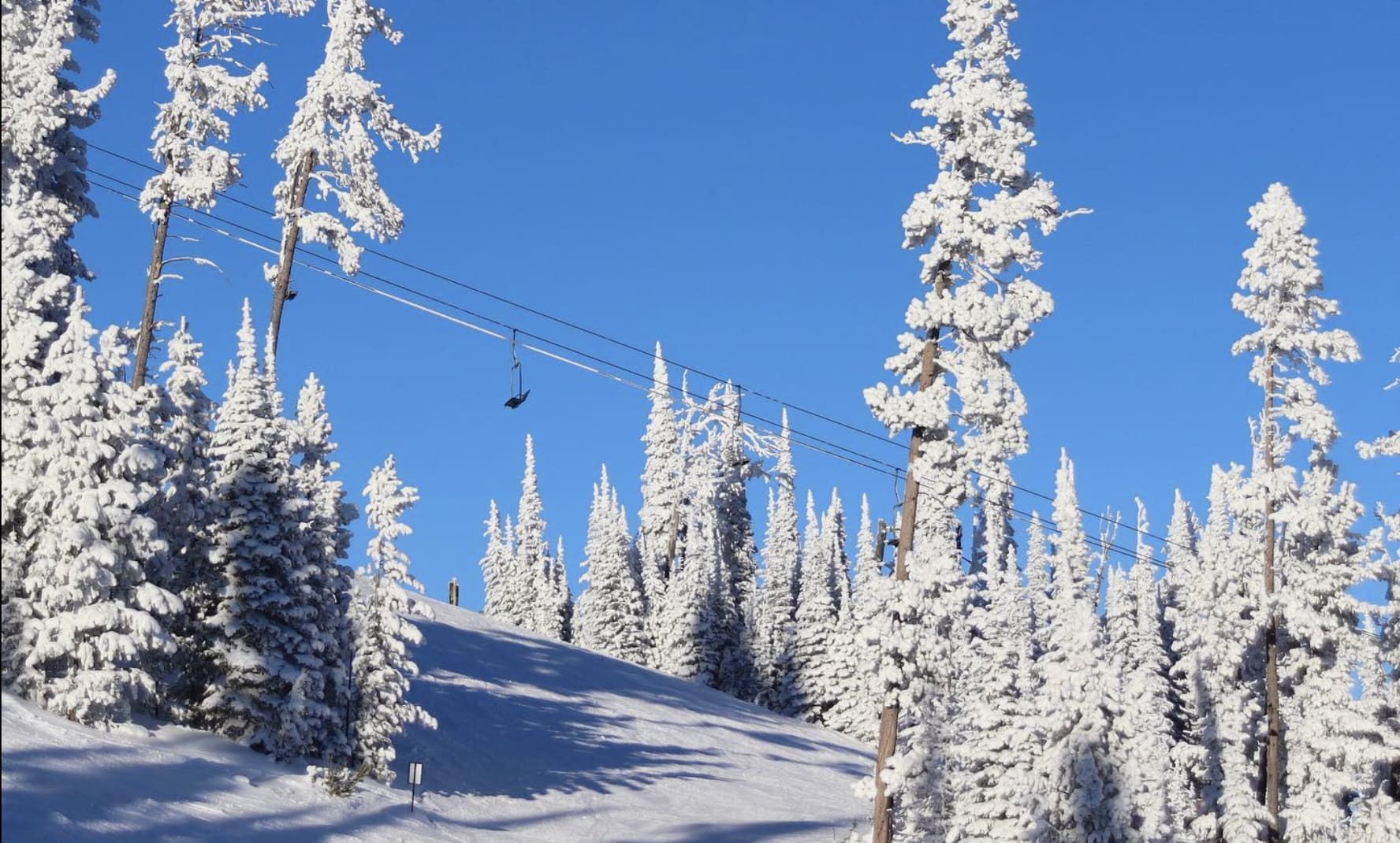TRAVEL
The Absolute Best Things To Do In Japan For Avid Travelers

Japan is a land of contrasts, where ancient traditions seamlessly blend with modern innovations, creating a captivating tapestry of experiences for travelers. The country also offers many unforgettable adventures, like savoring exquisite cuisine and immersing oneself in vibrant cultural festivals.
We’ve curated a list of unmissable experiences in Japan that will leave you enchanted and yearning for more.
Culinary Delights

- Indulge in Authentic Sushi: Embark on a journey of flavors by savoring freshly prepared sushi from renowned sushi masters in Tokyo’s renowned sushi bars.
- Slurp a Bowl of Ramen: Explore the regional variations of this beloved dish, from the rich tonkotsu (pork bone) ramen of Kyushu to the miso-flavored delicacies of Hokkaido.
- Savor Kobe Beef: Treat your taste buds to the ultimate indulgence – the melt-in-your-mouth texture and unparalleled flavor of authentic Kobe beef.
Cultural Immersion

- Witness a Geisha Performance: Step into the enchanting world of geisha culture by attending a mesmerizing dance performance in Kyoto’s historic Gion district.
- Participate in a Tea Ceremony: Learn the intricate art of the Japanese tea ceremony, a centuries-old tradition that embodies grace, mindfulness, and respect.
- Don a Traditional Kimono: Experience the elegance of Japanese attire by renting a beautiful kimono and strolling through ancient temples and gardens.
Natural Wonders

- Admire the Cherry Blossom Season: Join the hanami (flower viewing) festivities and picnic beneath the canopy of sakura (cherry blossom) trees in full bloom.
- Soak in Onsen Hot Springs: Unwind in the rejuvenating waters of natural hot springs, a time-honored Japanese tradition for relaxation and healing.
- Explore Mount Fuji: Embark on a hiking adventure to the summit of the iconic Mount Fuji, Japan’s highest mountain and a revered symbol of beauty and strength.
Urban Adventures

- Embrace Otaku Culture in Akihabara: Immerse yourself in the world of anime, manga, and video games in Tokyo’s vibrant Akihabara district, a mecca for pop culture enthusiasts.
- Wander through Shibuya Crossing: Experience the iconic scramble crossing in Shibuya, where thousands of pedestrians navigate the bustling intersection in an intricate dance.
- Discover the Nightlife in Golden Gai: Explore the narrow alleyways of Golden Gai, a vibrant hub of tiny bars and izakayas (Japanese pubs) offering a glimpse into Tokyo’s vibrant nightlife.
Bringing Japanese Pop Culture Home With The Otaku Box

After experiencing Japanese pop culture during your travels, you may want to continue that connection at home. The Otaku Box is a monthly subscription service that delivers exclusive anime-themed merchandise, collectibles, and more right to your door.
Each curated box contains items like figurines, art prints, apparel, and accessories to delight any anime fan. The Otaku Box also provides an online community where you can stay updated on the latest anime news and connect with fellow enthusiasts. It’s a convenient way to keep exploring the worlds of anime and manga you discovered in Japan.
TRAVEL
Discover Costa Rica’s Breathtaking Landscapes from Above on a Zipline Tour

zCosta Rica is described as lush in its rainforests and coastlines because it meets the country’s diverse ecosystems. It offers travelers a paradise in which to explore it. Yet most do hike through their thick, unspoiled forest on foot and then partake in lounging by their brilliant, undeveloped beaches; there is yet one more exciting way this jewel of Central America can be experienced: ziplining. This blog shall take us through the thrill of ziplining in Costa Rica, where adventure seekers see its stunning terrains from the air, from one tree to another.
The Thrill of Ziplining
Ziplining is an experience designed for an adrenaline kick, flying through the air and enjoying the beauties of nature from a bird’s eye view. Some canopy tours go right above big canyons or even over giant waterfalls.
The sensation of gliding through the treetops is like no other, pleasing even those who crave a bit of adventure.
Exploring Costa Rica’s Breathtaking Landscapes
One of the most pleasurable activities one can indulge in with friends or family is the zipline across 14 different cables, from one platform to another, giving a good look at the panoramic views with misty cloud forests and lively jungles with lots of wildlife. Just imagine yourself winging down a valley with the wind in your face and the sight and sound of rainforest below.
Choosing the Right Ziplining Adventure
With a host of ziplining operators in Costa Rica, research and find just the proper adventure for you. Ziplining tours are offered with an adrenaline-pumping experience offered high above the trees at a more leisurely pace. Look for reputable companies committed to safety, sustainability, and giving their guests an experience of a lifetime.
Safety First
Before you go ziplining, however, there is more emphasis on safety. Therefore, zipline tour operators in Costa Rica follow strict safety measures, which ensure every participant is wearing harnesses, helmets, and other gear. Full safety briefs and demonstrations are needed to ensure the clients follow the proper zipline techniques and safety requirements. The zipline equipment and ziplining platforms are checked occasionally to meet the highest standards of ziplining safety. However, an adventurer will be assured of the best concern for his security when he selects a licensed and certified operator for the zipline tour.
Ziplining for All
It is, however, still a sport for adventurers looking to have maximum fun and exercise the most incredible adrenaline rush. Thus, there is a corresponding ziplining tour, whatever the composition—family with young kids, groups of adventurous-spirited friends, or an individual traveling soul wishing to conquer higher altitudes. Some operators offer ziplining experiences to the physically impaired to make sure that they, too, enjoy the thrill of soaring through the air and seeing the beauty of Costa Rica from above.
From adventurers to families, from different sexes and ages to various physical abilities, ziplining is all-inclusive and accessible.
Environmental Awareness
Sustainability and conservation are apart, and the adventure of ziplining in Costa Rica raises a higher appraisal of the environment. Many tour operators precisely outline their visitors’ sustainability and conservation orientation in terms of preserving such delicate ecosystems. In this way, travelers can contribute to protecting the country’s natural heritage for future generations by taking eco-friendly ziplining tours.
Environmental Impact and Conservation Efforts
Ziplining in Costa Rica has the twofold benefit of an adrenalin adventure and impacts environmental conservation. Most tour companies offering ziplining in Costa Rica focus on sustainability, meaning they try to have the least possible impact on surrounding ecosystems. They usually undertake projects related to reforestation, wildlife preservation programs, and community programs by reaching out to the public in sensitization efforts on how to save the nation’s natural resources. Tourists taking ziplining trips may contribute to this excellent task by participating in ziplining tours with such conservationists or environment-concerned tour operators and helping them protect the incredible biodiversity of Costa Rica.
Tips for a Memorable Ziplining Experience
Before embarking on your ziplining adventure, here are some tips to ensure you make the most of your experience:
- What to wear: dress appropriately in loose, comfortable clothes and outdoor closed-toe shoes. Remember your sunscreen and repellent against insects.
- Listen to your guide: Pay attention to the safety briefing and follow your guide’s instructions carefully.
- Bring a camera: Capture the breathtaking scenery and share your ziplining adventure with friends and family.
- Stay hydrated: Costa Rica’s tropical climate can be humid, so drink plenty of water throughout the tour.
OK, go for it, but zipline flying should be an adventure, not something to waste away your time. Just go and enjoy the flying, fearing nothing, for example, such nonsense like “What if I fall from this great height – higher than a five-story house?
Conclusion
It is thrilling for any adventurer, as its zipline experience lets one enjoy the breathtaking and up-close views from above the beautiful landscapes of Costa Rica.
From the cloud forests to the evergreen rainforests, all offer something new to gaze at out of the diverse ecosystems of Costa Rica on this zipline journey.
Safety, sustainability, and inclusiveness are among the primary goals zipline tour operators pursue to make it possible for everyone to give themselves a treat with the excitement of ziplining. What better way to top off a day filled with adventure in the ziplines than by heading out to one of those luxurious Costa Rica villas?
Positioned among the nation’s most beautiful and picturesque sceneries, these villas are surrounded by comfort and privacy that all tourists are guaranteed to experience. Ideal for a romantic hideaway, great for family getaways, or a place for group retreats, villas in Costa Rica is the perfect ambiance to let your hair down and become one with nature.
So, when you’ve zipped through the treetops, let yourself flop and droop in your private paradise.
TRAVEL
Bad News for Ski Resort: Climate, Cost & Safety Concerns

The Bad News for Ski Resort worldwide are confronting a series of challenges that threaten their viability and the broader winter sports industry. From climate change-induced shorter seasons to economic hurdles and safety concerns, these issues are reshaping the landscape of alpine tourism.
Climate Change and Shortened Ski Seasons
One of the most pressing issues is the impact of climate change on snowfall patterns. Research from the Australian National University indicates that Australia’s ski seasons could shorten by one-third by 2030, even with significant reductions in greenhouse gas emissions. Resorts like Ben Lomond and Mount Baw Baw are projected to experience a decline of 16-18 days in ski season length by the 2030s. By the 2050s, this could extend to a loss of 28 days under low emissions scenarios, and up to 55 days under high emissions scenarios, potentially reducing to just one skiable day by 2080 if emissions remain unchecked.
Similarly, in the United States, the Climate Impact Lab reports that counties home to major ski resorts are facing rising temperatures, leading to fewer days with temperatures at or below freezing. For instance, Truckee, California, near North Lake Tahoe, is projected to have only eight days per year at or below 32°F by 2100 under a high emissions scenario, an 80% loss compared to historic conditions.
Economic Challenges and Rising Costs
The economic sustainability of ski resorts is under threat due to escalating operational costs and fluctuating visitor numbers. Vail Resorts, a major player in the industry, announced a two-year “transformation plan” involving job cuts to counteract struggles from limited snow and decreased visitors. The company plans to reduce its corporate workforce by 14% and less than 1% of its operational positions, totaling less than 2% of all employees. This move aims to enhance organizational effectiveness and support future growth and global expansion.
In Australia, the cost of skiing has become prohibitive for many. Since 1990, prices at top resorts like Thredbo and Perisher have skyrocketed by more than 440%. A day lift pass that cost $46 in 1990 is now priced at $249, far exceeding inflation-adjusted expectations of $118. This surge has led to widespread dissatisfaction among skiers and families who once frequented these resorts, making skiing increasingly a luxury only the wealthy can afford.
Safety Concerns: Avalanches and Extreme Weather
Safety remains a paramount concern, with avalanches posing significant risks. In January 2024, an avalanche at Palisades Tahoe ski resort in California resulted in one fatality and three injuries. The avalanche occurred on expert trails amid a major storm with snow and gusty winds, highlighting the dangers associated with extreme weather conditions.
Extreme weather events also disrupt operations. In March 2024, strong winds exceeding 100 km/h violently shook chairlifts at an Italian ski resort, posing risks to passengers and leading to temporary closures.
Environmental and Legal Challenges
Environmental concerns are leading to legal challenges against ski resort expansions. In the French Alps, judicial rulings have halted several tourism development projects due to environmental and resource concerns. For example, in l’Alpe-d’Huez and Le Grand-Bornand, local courts rejected plans for new hotels and a chairlift, criticizing the environmental assessments and questioning the necessity and impact on water resources. This reflects a broader shift influenced by environmental activism, changing laws, and heightened public scrutiny.
Social and Community Issues
Social tensions are also emerging. In April 2024, tech billionaire Matthew Prince sued his neighbors at a Utah ski resort, claiming their dogs defecated on his property and harassed his family. The neighbors denied the allegations, and the dispute was exacerbated by their opposition to Prince’s plan to build an 11,000-square-foot mansion, highlighting the complexities of community relations in resort areas.
Challenges Facing Ski Resorts
| Challenge | Description | Example |
|---|---|---|
| Climate Change | Shortened seasons due to reduced snowfall and rising temperatures | Australia’s ski seasons could shorten by one-third by 2030. |
| Economic Pressures | Rising operational costs and declining visitor numbers | Vail Resorts announced job cuts amid financial losses. |
| Safety Concerns | Increased risk of avalanches and extreme weather events | Avalanche at Palisades Tahoe resulted in one death and three injuries. |
| Environmental and Legal Challenges | Legal actions halting resort expansions due to environmental concerns | French courts halted development projects in l’Alpe-d’Huez and Le Grand-Bornand. |
| Social and Community Issues | Disputes among residents and developers affecting community relations | Lawsuit between tech billionaire and neighbors over property disputes in Utah. |
Conclusion: Bad News for Ski Resort
The challenges facing Bad News for Ski Resort are multifaceted, encompassing environmental, economic, safety, legal, and social dimensions. Addressing these issues requires a comprehensive approach that includes sustainable practices, community engagement, and adaptive strategies to ensure the future of winter sports and alpine tourism.
TRAVEL
Why Advanced Travel Planning Reduces Anxiety and Stress

Traveling is an exciting experience, but the logistics involved can sometimes cause anxiety and stress. From navigating new locations to managing schedules and budgets, there’s a lot to consider when planning a trip. Advanced planning can make a significant difference in reducing travel-related stress, allowing you to focus on enjoying your journey. Here’s how strategic planning can make your travel experience smoother and more enjoyable.

1. Secure Car Parking Ahead of Time
One of the biggest hassles for travelers, especially when heading to popular destinations or large venues, is finding a convenient and secure parking spot. Advanced planning allows you to research and book your parking space beforehand, eliminating last-minute stress. For example, if you’re traveling to a crowded area, like a stadium, researching mcg parking options can save you valuable time on the day of the event. Pre-booking a parking spot provides peace of mind, knowing you have a reserved place, and helps you avoid the frustration of circling and looking for available spots.
2. Create a Flexible Itinerary
Planning a detailed itinerary can ease travel stress by giving structure to your day while leaving room for flexibility. When you outline your travel plans, including activities, meals, and sightseeing, you have a clearer sense of what your day will look like. A flexible itinerary ensures you have a list of things to do but also allows you to adapt to spontaneous opportunities. This balance of structure and flexibility can help you enjoy your trip without the anxiety of feeling rushed or pressured to stick to a rigid schedule.
3. Budget Your Trip in Advance
Financial concerns are a major source of stress for many travelers, but advanced budgeting can provide a sense of control and confidence. When you plan your budget, estimate costs for accommodations, meals, activities, and transportation. This approach allows you to set realistic expectations and helps you avoid overspending. Advanced budgeting also allows you to allocate funds for special experiences or unexpected expenses, reducing stress about money while traveling. A clear budget plan can make a big difference in helping you relax and enjoy your trip.
4. Research Your Destination
One of the most effective ways to reduce travel anxiety is by thoroughly researching your destination ahead of time. Familiarizing yourself with the local culture, language, and customs can help you feel more prepared and comfortable, allowing you to engage more meaningfully with the environment and its people. Start by learning about the essential details: public transportation options, popular dining spots, local tipping customs, and emergency services like hospitals and pharmacies. This information can make navigating a new place much easier and give you peace of mind.
Diving deeper into your research can also help you uncover lesser-known attractions or hidden gems, enriching your experience and ensuring you maximize your time there. Reading travel guides, online reviews, or even travel blogs can provide insights that help you avoid common tourist mistakes and allow you to find authentic experiences that align with your interests. Talking to friends or family who have visited the location or joining travel forums can also be helpful. Locals and experienced travelers often have tips on what to see, what to avoid, and how to move around efficiently, giving you insider knowledge that helps you feel like a well-informed traveler.
5. Pack Strategically and in Advance

Packing is often left until the last minute, but rushing through it can lead to unnecessary stress and even forgetting important items. By packing strategically and in advance, you can ensure you have everything you need and reduce the anxiety of a last-minute scramble. Make a packing checklist that includes essentials like documents, chargers, toiletries, and weather-appropriate clothing. Packing in advance also gives you time to double-check items or purchase anything you may have overlooked. With everything organized and ready to go, you can start your trip with a sense of calm.
6. Plan for Potential Delays and Setbacks
Travel can be unpredictable, with delays and unexpected challenges often popping up along the way. Planning for potential setbacks is a proactive way to ease stress, allowing you to navigate unforeseen issues with greater flexibility and calm. Start by giving yourself extra time in your itinerary for travel connections, especially if you’re moving between flights, trains, or other modes of transportation. This buffer ensures that minor delays don’t disrupt your entire schedule. For example, if you have a connecting flight, plan for at least an hour or two between connections to allow time for security checks, gate changes, or small delays.
It’s also helpful to research alternative routes and modes of transportation at your destination in case your primary travel plans fall through. Knowing the backup bus routes, train options, or even walking distances can be invaluable if you encounter road closures, public transport issues, or other disruptions. Additionally, booking flexible accommodations and activities that allow for changes or cancellations can give you peace of mind, as you won’t feel tied to a rigid schedule that could incur extra costs if plans change.
7. Prioritize Self-Care During Your Trip
Traveling, especially when it involves tight schedules and new environments, can take a toll on both your physical and mental well-being. Prioritizing self-care while on your trip helps keep stress levels in check and ensures you feel refreshed and energized for each day’s adventures. Simple practices, such as staying hydrated, getting adequate rest, and incorporating some downtime, can make a big difference. Try to balance your itinerary by mixing in relaxing activities, like a quiet meal or a scenic walk, to recharge between more active experiences. Self-care during travel not only enhances your enjoyment but also helps you stay resilient in case of any unexpected issues, keeping your journey both smooth and satisfying.
Advanced travel planning is an effective way to minimize stress and ensure a smooth, enjoyable trip. From securing parking and budgeting to creating flexible itineraries and preparing for delays, these proactive steps provide structure and peace of mind. By planning, you can reduce travel-related anxiety, making it easier to embrace the journey and fully enjoy your experiences. Whether it’s a short getaway or a long adventure, thorough preparation allows you to focus on what matters—creating lasting memories and savoring every moment of your travel experience.

 Cartoon9 months ago
Cartoon9 months agoUnlocking the Potential of Nekopoi.care: A Comprehensive Guide

 Game8 months ago
Game8 months agoExploring Aopickleballthietke.com: Your Ultimate Pickleball Destination

 BUSINESS8 months ago
BUSINESS8 months agoWhat Companies Are In The Consumer Services Field

 TECHNOLOGY7 months ago
TECHNOLOGY7 months agoThe Guide to Using Anon Vault for Secure Data Storage

 HOME IMPROVEMENT9 months ago
HOME IMPROVEMENT9 months agoVtrahe vs. Other Platforms: Which One Reigns Supreme?

 ENTERTAINMENT9 months ago
ENTERTAINMENT9 months agoThe Epic Return: Revenge of the Iron-Blooded Sword Hound

 HEALTH9 months ago
HEALTH9 months agoUnveiling the Mystery of Pikruos: A Comprehensive Guide

 HOME IMPROVEMENT9 months ago
HOME IMPROVEMENT9 months agoExploring the Events of 2023-1954: A Look Back in Time

















